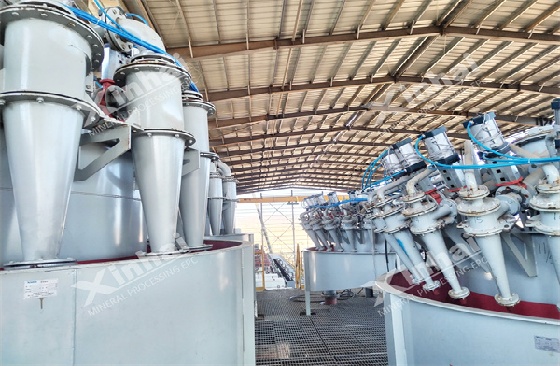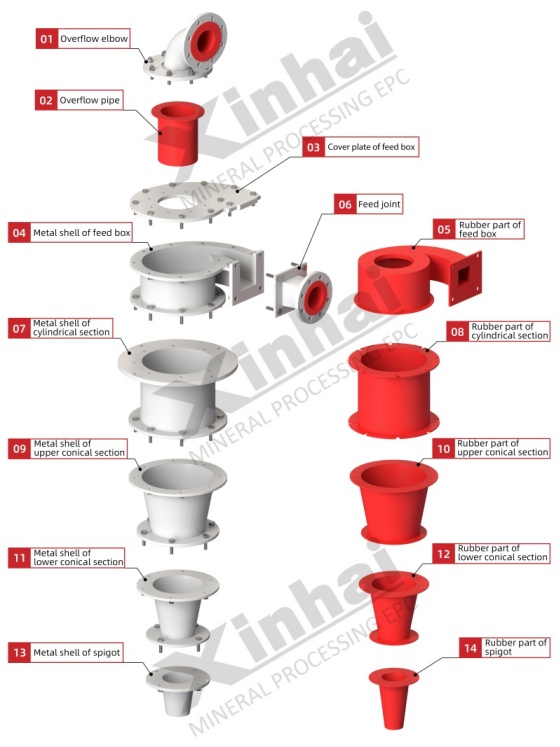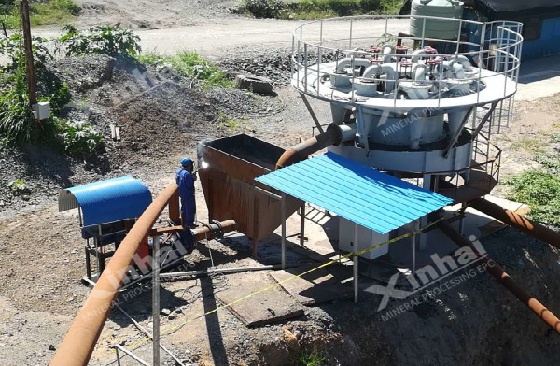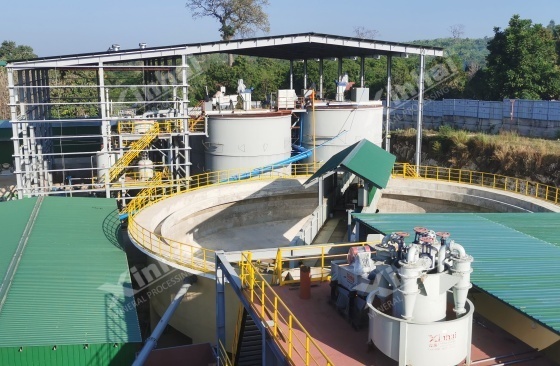If you want to know more information (such as product/process price, etc.), please contact us 24-hour telephone
Hydrocyclones are vital tools in the mining world. They split solids from liquids using a spinning motion. This makes them a big deal for sorting materials in mineral processing. Truth be told, they’re a game-changer for handling huge amounts of stuff, especially tiny particles. They work wonders when dealing with fine-grained materials, smoothing out the whole mining process.
In mining plants, hydrocyclones wear many hats. They sort crushed ore, clear out slimy muck, dry wet materials, and even pull valuable bits from waste piles. Their small size and cheap running costs make them a favorite. Huge mines rely on them, but smaller setups find them just as useful.

Hydrocyclones use basic fluid flow and spinning power to do their job. Slurry rushes in at an angle, moving fast. This starts a whirling motion inside. Heavy particles get tossed to the outer walls. Lighter ones drift up through the middle. It’s like a tornado sorting things out naturally.
This setup lets hydrocyclones sort by size and weight. The heavy stuff slides out through the bottom overflow port. Lighter bits float out the top overflow port. The result is a clean split that sets up later steps, like flotation or gravity sorting, for success.
A few things decide how well a hydrocyclone does its job:
Feed Concentration: If the slurry is too thick or too watery, it throws off the sorting. It’s a delicate balance.
Flow Rate: Keeping the speed steady ensures the spinning force is right for separating particles.
Particle Size Distribution: Tiny grains need a different setup than bigger ones. One size doesn’t fit all.
Density Difference: The bigger the weight gap between particles, the easier it is to sort them.
By watching these factors and making small tweaks, workers can make hydrocyclones work better. It’s like adjusting a bike’s gears to ride smoother.

Hydrocyclones are busy in all corners of mining:
Ore Classification: After ore gets crushed, hydrocyclones separate big chunks from fine dust. This helps the next steps go smoothly.
Primary Sorting: Early on, they boost sorting speed and cut the workload for other machines.
Fine-Grained Mineral Recovery: Their spinning power handles super small particles well. Even when grains are tiny, hydrocyclones deliver solid results.
Tailings Management: Mining leaves behind heaps of waste, or tailings. Some hold valuable minerals. Hydrocyclones grab those, raising recovery rates.
These different roles show why hydrocyclones are a must in today’s mining setups.
Getting hydrocyclones to shine takes more than just buying the right one. It needs clever adjustments:
Design Modifications: Tweaking the vortex finder’s width or the cone’s slope sharpens how particles are split.
Pressure Control: Managing the feed pressure keeps the flow steady, like keeping a stream running clear.
Multiple Cycloning Systems: Using a group of hydrocyclones together handles bigger loads easily.
By carefully controlling slurry thickness and flow speed, workers can get top-notch results. Plus, new tools like live sensors catch problems early. This cuts downtime and boosts output. Honestly, it’s a big win for busy mines.

Hydrocyclones aren’t flawless. They come with some hiccups:
Sensitivity to Feed Variability: If the slurry keeps changing, sorting gets messy. Consistency is tough to maintain.
Limited Precision for Ultra-Fine Particles: Really tiny bits can slip into the wrong stream, messing things up.
Wear and Tear: Fast-moving slurry grinds down the cyclone’s insides over time. It’s a rough job.
That’s the deal with hydrocyclones—great but not perfect. Regular fixes and tweaks keep them humming, though it’s no small task.
New ideas are making hydrocyclones even better:
Smart Monitoring Systems: Sensors now track stuff like pressure drops and solid levels. It’s like giving the machine eyes.
Modular Designs: Newer models are easy to swap or scale up as mines grow.
Advanced Materials: Tough linings stand up to gritty slurry, lasting longer than before.
With tech moving fast, hydrocyclones are set to play a bigger role in mining down the road.
During the grading process at a certain gold mine, poor grading performance and inadequate solid-liquid separation were observed. Consequently, several Xinhai hydrocyclones were added.
Xinhai's hydrocyclone equipment utilizes an involute feed system. This involute feed port increases the centrifugal force of the material, improving grading efficiency and significantly reducing wear on the feed box. The system achieves high grading performance with minimal fluctuation.
This renovation successfully addressed key challenges, significantly increasing grading efficiency to over 68%. With stable operating performance and excellent wear resistance, it achieved both improved system efficiency and economic benefits.

Q1: What is a hydrocyclone used for in mineral processing?
It’s a machine for separating solids from liquids. It’s awesome for sorting, cleaning out slime, drying stuff, and pulling valuables from waste.
Q2: How does a hydrocyclone work?
Slurry shoots in and spins inside. Heavy bits move out to the walls. Lighter ones spiral up. They leave through separate exits.
Q3: What factors influence its performance?
Things like feed pressure, slurry thickness, particle size, and weight gaps all affect how well it sorts.
Q4: Can it handle ultra-fine particles?
Yes, but super tiny grains are tricky. Sorting gets less sharp, though tweaks can help.
Q5: Is it energy efficient compared to other methods?
In real mining, hydrocyclones save power and work fast. They’re budget-friendly over time, which is why mines love them.
Ready to supercharge your mining process with top-tier hydrocyclone tech? Get in touch or dive into Xinhai Mining’s solutions!